#japan electronic travel authorization
Explore tagged Tumblr posts
Text
Japan e-visa for us citizens

US citizens who plan to visit Japan for tourism, business, or other purposes can apply for an e-Visa or electronic visa to enter the country. The e-Visa is a convenient and faster option compared to the traditional paper visa application process, and US citizens are eligible for it.
To apply for an e-Visa to Japan as a US citizen, you will need to meet the eligibility criteria and provide the required documents. The documents include a valid US passport, a recent photograph, and any other supporting documents for your visa category. You will also need to fill out an online application form and pay the e-Visa application fee using a credit or debit card.
Once you submit your application, it will be reviewed by the Japanese Immigration Bureau, which may take up to 5 business days. However, the processing time can be faster in some cases. If your e-Visa is approved, you will receive it by email, which you need to print out and present to the immigration officer upon arrival in Japan.
It's important to note that the e-Visa is not applicable for US citizens who plan to stay in Japan for more than 90 days or engage in paid activities. In such cases, you need to apply for a traditional visa through the Japanese embassy or consulate in your home country.
The e-Visa has several advantages over the traditional paper visa, such as convenience, speed, and cost-effectiveness. With the e-Visa, you can apply for a visa from anywhere in the world without the need to visit a Japanese embassy or consulate. You can also eliminate the need to submit physical documents, which saves time and money on shipping and courier services. Moreover, the e-Visa reduces the chances of errors and mistakes in the visa application process.
In conclusion, US citizens who plan to visit Japan can apply for an e-Visa, which is a convenient and faster option compared to the traditional paper visa. The e-Visa application process is straightforward and can be done online through the official website. By using the e-Visa, US citizens can enjoy a hassle-free and cost-effective visa application process and explore the beauty and culture of Japan.
Apply for eVisa Japan: CLICK HERE
#electronic japan visa#japan electronic visa application#how to get japan visa#can i get a visa to japan#can i apply japan visa online#can i get a visa to japan right now#how to pass japan visa#how to process japan visa#is japan visa free#japan electronic visa#japan electronic travel authorization#japan e-visa#japan e-visa application#electronic visa for japan#what is electronic visa#korean electronic visa
1 note
·
View note
Text
Japan e-visa

Japan has recently introduced an e-Visa system, which allows eligible travelers to apply for a visa to Japan online. This electronic visa system provides a convenient and efficient way for travelers to obtain a visa, making the application process faster and more accessible.
The Japan e-Visa is currently available to citizens of 69 countries, including the United States, Canada, Australia, and many European countries. The e-Visa allows travelers to enter Japan for tourism or business purposes for up to 90 days.
The application process for the Japan e-Visa is straightforward and can be completed entirely online. Applicants must first fill out an online application form, providing personal information, travel details, and other relevant information. They must also upload supporting documents, such as a passport scan, a recent photograph, and a travel itinerary.
Once the application is submitted, it is reviewed by Japanese immigration officials, who may request additional information or documentation if necessary. The processing time for the Japan e-Visa is generally faster than the traditional visa application process, with most applications processed within a few business days.
If the application is approved, the e-Visa is sent to the applicant via email, which must be printed and presented to Japanese immigration officials upon arrival in Japan. It's important to note that even with an approved e-Visa, Japanese officials may still require additional information or documentation upon arrival.
The Japan e-Visa is only valid for certain purposes, such as tourism or business, and cannot be used for work or study purposes. Additionally, the e-Visa is only valid for a single entry into Japan, and travelers must have a return ticket or onward travel plans.
It's important to note that the Japan e-Visa is not available to all nationalities, and some travelers may still need to apply for a traditional visa through the Japanese embassy or consulate in their home country. Additionally, travelers must meet certain eligibility requirements and provide accurate information on the application form.
In conclusion, the Japan e-Visa system provides a convenient and efficient way for eligible travelers to obtain a visa to Japan. With a simple online application process and faster processing times, the e-Visa system is a great option for those looking to visit Japan for tourism or business purposes. It's important to check the eligibility requirements and specific application procedures before applying for a Japan e-Visa.
Apply for eVisa Japan: CLICK HERE
#electronic japan visa#japan electronic visa application#how to get japan visa#can i get a visa to japan#can i apply japan visa online#can i get a visa to japan right now#how to pass japan visa#how to process japan visa#is japan visa free#japan electronic visa#japan electronic travel authorization#japan e-visa#japan e-visa application#electronic visa for japan#what is electronic visa#korean electronic visa
1 note
·
View note
Text
Japan electronic visa

Japan has recently introduced an electronic visa (eVisa) system for certain nationalities, making the process of obtaining a visa to Japan more convenient and efficient. The Japan eVisa is an online visa application that allows eligible travelers to apply for a Japan visa from anywhere in the world.
The Japan eVisa system was introduced in 2018 and is currently available for citizens of 69 countries, including the United States, Canada, Australia, and many European countries. The eVisa allows travelers to enter Japan for tourism or business purposes for up to 90 days.
The application process for the Japan eVisa is straightforward and can be completed entirely online. Applicants must first fill out an online application form, providing personal information, travel details, and other relevant information. They must also upload supporting documents, such as a passport scan, a recent photograph, and a travel itinerary.
Once the application is submitted, it is reviewed by Japanese immigration officials, who may request additional information or documentation if necessary. The processing time for the Japan eVisa is generally faster than the traditional visa application process, with most applications processed within a few business days.
If the application is approved, the eVisa is sent to the applicant via email, which must be printed and presented to Japanese immigration officials upon arrival in Japan. It's important to note that even with an approved eVisa, Japanese officials may still require additional information or documentation upon arrival.
It's important to note that the Japan eVisa is not available to all nationalities, and some travelers may still need to apply for a traditional visa through the Japanese embassy or consulate in their home country. Additionally, the Japan eVisa is only valid for certain purposes, such as tourism or business, and cannot be used for work or study purposes.
In conclusion, the Japan eVisa system provides a convenient and efficient way for eligible travelers to obtain a visa to Japan. With a simple online application process and faster processing times, the eVisa system is a great option for those looking to visit Japan for tourism or business purposes. It's important to check the eligibility requirements and specific application procedures before applying for a Japan eVisa.
Apply for eVisa Japan: CLICK HERE
#electronic japan visa#japan electronic visa application#how to get japan visa#can i get a visa to japan#can i apply japan visa online#can i get a visa to japan right now#how to pass japan visa#how to process japan visa#is japan visa free#japan electronic visa#japan electronic travel authorization#japan e-visa#japan e-visa application#electronic visa for japan#what is electronic visa#korean electronic visa
1 note
·
View note
Text
Can i apply japan visa online

If you're planning a trip to Japan, you may be wondering whether you can apply for a Japan visa online. The good news is that Japan offers an electronic visa application system for some nationalities, making the visa application process more convenient and streamlined. Here's what you need to know about applying for a Japan visa online.
Eligibility for an electronic visa
Currently, Japan offers an electronic visa, also known as an eVisa, to nationals of certain countries, including the United States, Canada, Australia, and many European countries. However, it's important to note that not all nationals of these countries may be eligible for an eVisa, and eligibility criteria can vary.
Types of visas available
Japan offers various types of visas, including tourist visas, business visas, and student visas. Some of these visas can be applied for online, while others still require an in-person application. Make sure you understand the specific requirements for the type of visa you need to apply for.
How to apply for an electronic visa
To apply for an electronic visa to Japan, you'll need to visit the official website of the Japan Ministry of Foreign Affairs and follow the instructions provided. You'll need to complete an online application form and provide the necessary documents, such as a passport-sized photo, a copy of your passport, and proof of your travel itinerary.
Processing time and fees
The processing time for an electronic visa to Japan can vary, but generally takes around three to five business days. You'll also need to pay a visa processing fee, which can vary depending on your nationality and the type of visa you're applying for.
Final steps
Once your electronic visa application is approved, you'll receive your visa electronically via email. You'll need to print a copy of the visa and bring it with you when you travel to Japan. It's important to note that having an electronic visa doesn't guarantee entry into Japan, and you may still be subject to additional screening and entry requirements upon arrival.
In conclusion, applying for a Japan visa online is a convenient option for eligible nationals, and can save time and hassle compared to traditional in-person visa applications. However, it's important to carefully review the eligibility criteria and application requirements before applying for an electronic visa to ensure a smooth and successful visa application process.
Apply for eVisa Japan: CLICK HERE
#electronic japan visa#japan electronic visa application#how to get japan visa#can i get a visa to japan#can i apply japan visa online#can i get a visa to japan right now#how to pass japan visa#how to process japan visa#is japan visa free#japan electronic visa#japan electronic travel authorization#japan e-visa#japan e-visa application#electronic visa for japan#what is electronic visa#korean electronic visa
0 notes
Text
IS THE MOON RUSTING??
Blog#309
Wednesday, June 28th, 2023
Welcome back,
While our Moon is airless, research indicates the presence of hematite, a form of rust that normally requires oxygen and water. That has scientists puzzled.
Mars has long been known for its rust. Iron on its surface, combined with water and oxygen from the ancient past, give the Red Planet its hue. But scientists were recently surprised to find evidence that our airless Moon has rust on it as well.
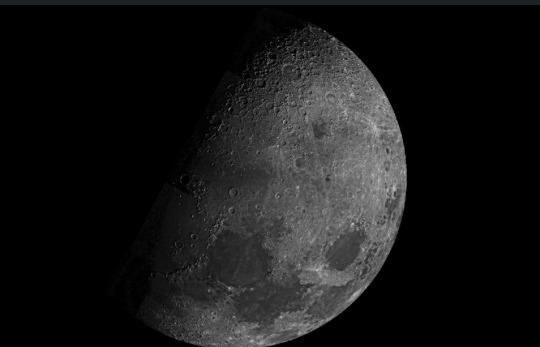
A new paper in Science Advances reviews data from the Indian Space Research Organization's Chandrayaan-1 orbiter, which discovered water ice and mapped out a variety of minerals while surveying the Moon's surface in 2008. Lead author Shuai Li of the University of Hawaii has studied that water extensively in data from Chandrayaan-1's Moon Mineralogy Mapper instrument, or M3, which was built by NASA's Jet Propulsion Laboratory in Southern California. Water interacts with rock to produce a diversity of minerals, and M3 detected spectra - or light reflected off surfaces - that revealed the Moon's poles had a very different composition than the rest of it.

Intrigued, Li homed in on these polar spectra. While the Moon's surface is littered with iron-rich rocks, he nevertheless was surprised to find a close match with the spectral signature of hematite. The mineral is a form of iron oxide, or rust, produced when iron is exposed to oxygen and water. But the Moon isn't supposed to have oxygen or liquid water, so how can it be rusting?
The mystery starts with the solar wind, a stream of charged particles that flows out from the Sun, bombarding Earth and the Moon with hydrogen.

Hydrogen makes it harder for hematite to form. It's what is known as a reducer, meaning it adds electrons to the materials it interacts with. That's the opposite of what is needed to make hematite: For iron to rust, it requires an oxidizer, which removes electrons. And while the Earth has a magnetic field shielding it from this hydrogen, the Moon does not.
"It's very puzzling," Li said. "The Moon is a terrible environment for hematite to form in." So he turned to JPL scientists Abigail Fraeman and Vivian Sun to help poke at M3's data and confirm his discovery of hematite.
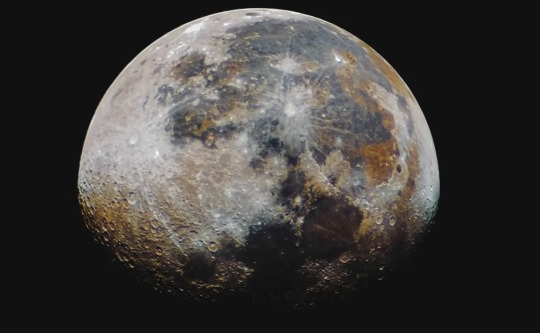
"At first, I totally didn't believe it. It shouldn't exist based on the conditions present on the Moon," Fraeman said. "But since we discovered water on the Moon, people have been speculating that there could be a greater variety of minerals than we realize if that water had reacted with rocks."
After taking a close look, Fraeman and Sun became convinced M3's data does indeed indicate the presence of hematite at the lunar poles. "In the end, the spectra were convincingly hematite-bearing, and there needed to be an explanation for why it's on the Moon," Sun said.
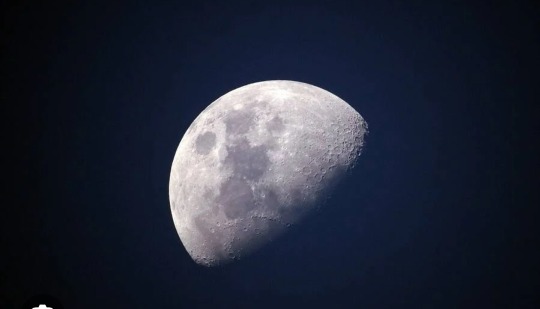
Their paper offers a three-pronged model to explain how rust might form in such an environment. For starters, while the Moon lacks an atmosphere, it is in fact home to trace amounts of oxygen. The source of that oxygen: our planet.
Earth's magnetic field trails behind the planet like a windsock. In 2007, Japan's Kaguya orbiter discovered that oxygen from Earth's upper atmosphere can hitch a ride on this trailing magnetotail, as it's officially known, traveling the 239,000 miles (385,00 kilometers) to the Moon.
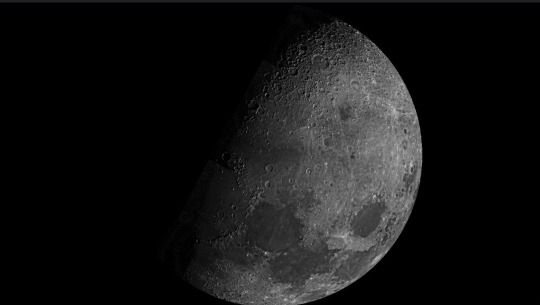
That discovery fits with data from M3, which found more hematite on the Moon's Earth-facing near side than on its far side. "This suggested that Earth's oxygen could be driving the formation of hematite," Li said. The Moon has been inching away from Earth for billions of years, so it's also possible that more oxygen hopped across this rift when the two were closer in the ancient past.
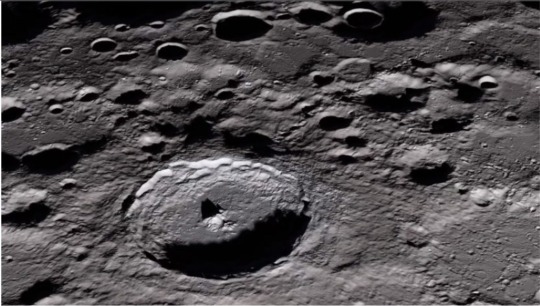
Then there's the matter of all that hydrogen being delivered by the solar wind. As a reducer, hydrogen should prevent oxidation from occurring.
But Earth's magnetotail has a mediating effect. Besides ferrying oxygen to the Moon from our home planet, it also blocks over 99% of the solar wind during certain periods of the Moon's orbit (specifically, whenever it's in the full Moon phase). That opens occasional windows during the lunar cycle when rust can form.
Originally published on NASA.gov
COMING UP!!
(Saturday, July 1st, 2023)
"WHAT IS TIME DISTORTION??"
#atmosphere#astronomy#outer space#alternate universe#astrophysics#universe#spacecraft#white universe#space#parallel universe#astrophotography#moon#rusty moon
206 notes
·
View notes
Text
Summary: In unearthing the Nomu Factory, the Heroes and police of Japan discovered a body. This was not unexpected, but the nationality and uniform of the corpse in question… that was. Because this failed Nomu wore the uniform of Amestris, a war torn nation from the isolated continent of Atossa, where Quirks and modern electronics had never developed and never worked. Edward Elric hoped he could retire from military service in peace, traveling Amestris while his brother Alphonse went to Xing. This is put on hold when now-Fuhrer Mustang asks him to travel to the Outside, to the world beyond that was barricaded for centuries after the development of something called ‘Quirks’. A soldier has been killed and Amestris needs to know more about the Outside. … Or, Edward Elric and Amestris meet the greater world of Heroes and Villains. It remains to be seen who’s more traumatized by the encounter.
Author: @quasar-crew
#official fic poll#haveyoureadthisfic#pollblr#internet culture#fandom culture#fanfic#fanfiction#tumblr polls#fandom poll#How to Solve a Murder and Incite a Rebellion#fmab#fullmetal alchemist#my hero academia#mha#boku no hero academia#bnha#crossover#no romantic relationships#ao3
20 notes
·
View notes
Text

Huge gamma-ray burst collection 'rivals 250-year-old Messier catalogue'
Hundreds of gamma-ray bursts (GRBs) have been recorded as part of an enormous global effort so extensive it "rivals the catalogue of deep-sky objects created by Messier 250 years ago", astronomers say.
GRBs are the most violent explosions in the Universe, releasing more energy than the Sun would in 10 billion years. They occur when either a massive star dies or two neutron stars merge.
The explosions are so formidable that if one were to erupt within a distance of 1,000 light-years from Earth – which is predicted to happen every 500 million years – the blast of radiation could damage our ozone layer and have devastating consequences for life. However, the chances of such an event occurring any time soon are extremely low.
First observed almost six decades ago, GRBs also have the potential to help us better understand the history of our Universe, from its earliest stars to how it looks today.
The latest research recorded 535 GRBs – the nearest of which was 77 million light-years from Earth – from 455 telescopes and instruments across the world.
It was led by Professor Maria Giovanna Dainotti, of the National Astronomical Observatory of Japan, and has been published today in the Monthly Notices of the Royal Astronomical Society.
The researchers likened their collection to the 110 deep-sky objects catalogued by the French astronomer Charles Messier in the 18th century. To this day the catalogue continues to provide astronomers – both professional and amateur – with a range of easy-to-find objects in the night sky.
"Our research enhances our understanding of these enigmatic cosmic explosions and showcases the collaborative effort across nations," said Professor Dainotti.
"The result is a catalogue akin to the one created by Messier 250 years ago, which classified deep-sky objects observable at that time."
It has been hailed by co-author Professor Alan Watson, of the National Autonomous University of Mexico, as a "great resource" that could help "push the frontiers of our knowledge forward".
Professors Watson and Dainotti were part of a team of more than 50 scientists who meticulously studied how GRB light reaches Earth over several weeks and, in some cases, even months after the explosion. The result, they say, is the largest catalogue ever assembled of GRBs observed in optical wavelengths with measured distances.
It includes 64,813 photometric observations collected over 26 years, with notable contributions from the Swift satellites, the RATIR camera, and the Subaru Telescope.
What the team found particularly interesting about their findings was that nearly a third of the GRBs recorded (28 per cent) did not change or evolve as the light from the explosions travelled across the cosmos.
Co-author Dr Rosa Becerra, of the University of Tor Vergata in Rome, said this suggests that some of the most recent GRBs behave in exactly the same way as those which occurred billions of years ago.
Such a finding is at odds with the big picture commonly seen in the Universe, where objects have continuously evolved from the Big Bang.
Professor Dainotti added: "This phenomenon could indicate a very peculiar mechanism for how these explosions occur, suggesting that the stars linked to GRBs are more primitive than those born more recently.
"However, this hypothesis still needs more investigation."
On the other hand, for the few GRBs where this optical evolution matches the X-ray evolution, a more straightforward explanation is possible.
"Specifically, we are observing an expanding plasma composed of electrons and positrons that cools over time, and like a hot iron rod radiating redder and redder light as it cools, we do see a transition of the emission mechanism," said fellow researcher Professor Bruce Gendre, of the University of the Virgin Islands.
"In this case, this mechanism may be linked to the magnetic energy that powers these phenomena."
The researchers now want the astronomical community to help expand their GRB compilation further. They have made the data accessible through a user-friendly web app and have called on their peers to add to it, ideally by sharing findings in the same format.
"Adopting a standardised format and units, potentially linked to the International Virtual Observatory Alliance protocols, will enhance the consistency and accessibility of the data in this field," Professor Gendre said.
"Once the data are secured, additional population studies will be conducted, triggering new discoveries based on the statistical analysis of the current work."
IMAGE: Gamma-ray bursts (like the one depicted in this artist’s impression) are the most violent explosions in the Universe, releasing more energy than the Sun would in 10 billion years. Credit: NASA/Swift/Cruz deWilde
5 notes
·
View notes
Text
The story broke in Japanese local media two months ago. A 32yo social media influencer from Osaka tried to enter Hawaii for what she says was a simple vacation. But US authorities pulled her into a separate room and subjected her to 27 hours of questioning.
The woman told Asahi TV News that border agents questioned her repeatedly about what she did for work. They even drilled into why she was carrying so many clothes with her. The woman maintained it was so she could take pictures – which only strengthened the cops’ suspicions she was there for work.
In the end, the agents told her that she wasn’t allowed to enter the US on an ESTA (Electronic System for Travel Authorization) visa. She was forced to return to Japan the next day without ever stepping foot out of the airport. {read}
5 notes
·
View notes
Text
USA Official United States Government Immigration Visa Application Online FOR JAPANESE CITIZENS
米国政府ビザ申請オンライン - ESTA USA

Address: 6 Chome-20-28 Shimomeguro, Meguro City, Tokyo 153-0064, Japan
Phone: +81 3-3713-6241
Email: [email protected]
Website: https://www.usa-online-visa.com/ja/visa/
Business Hours: 24/7/365
Owner / Official Contact Name: Franklin Rutgers Nice Brian
Description :米国 ESTA は、ビザ免除の訪問��の必須要件であり、特定の国籍に適用されます。 資格のある渡航者は、ESTA (Electronic System for Travel Authorization) を通じて、観光、乗り継ぎ、商用目的で米国に渡航するためにオンラインで登録できます。 ESTA 認証は発行日から 2 年間有効で、複数回の入国が可能で、90 回の滞在は最大 72 日間です。 ESTA 申請プロセスは簡単で、個人情報とパスポート情報、およびセキュリティと健康に関するいくつかの質問が必要です。 米国国土安全保障省による事前審査を可能にするため、旅行の予約時、ただし出発の XNUMX 時間前までに ESTA を申請することをお勧めします。 ESTA を申請すると、資格のある旅行者は従来のビザなしで米国を訪問でき、大使館や領事館で申請する必要がなくなります。 ただし、仕事や勉強などの他の目的で米国に旅行する外国人は、居住国の米国大使館または領事館に連絡する必要があります。 次の国の市民は、米国ビザ申請オンラインの対象となります アンドラ、オーストラリア、オーストリア、ベルギー、ブルネイ、チリ、クロアチア、チェコ共和国、デンマーク、エストニア、フィンランド、フランス、ドイツ、ギリシャ、ハンガリー、アイスランド、アイルランド、イタリア、日本、韓国、南、ラトビア、リヒテンシュタイン、リトアニア、ルクセンブルグ、マルタ、モナコ、オランダ、ニュージーランド、ノルウェー、ポーランド、ポルトガル、サンマリノ、シンガポール、スロバキア、スロベニア、スペイン、スウェーデン、スイス、台湾、英国。 The USA ESTA is a mandatory requirement for visa-exempt visitors and is applicable to certain nationalities. Eligible travelers can register online through the Electronic System for Travel Authorization (ESTA) for trips to the United States for tourism, transit, and business purposes. The ESTA authorization is valid for 2 years from the date of issue and allows multiple entries, with a maximum stay of 90 days each time. The ESTA application process is simple and requires personal and passport information, as well as a few questions related to security and health. It is recommended to apply for ESTA at the time of booking travel, but not less than 72 hours before departure, to allow for pre-screening by the US Department of Homeland Security. Applying for ESTA enables eligible travelers to visit the United States without the need for a traditional visa and avoids the need to apply at an embassy or consulate. However, foreign nationals traveling to the USA for other purposes, such as work or study, must contact a United States Embassy or Consulate in their country of residence. Citizens of the following countries are eligible for US Visa Application Online Andorra, Australia, Austria, Belgium, Brunei, Chile, Croatia, Czech Republic, Denmark, Estonia, Finland, France, Germany, Greece, Hungary, Iceland, Ireland, Italy, Japan, Korea, South, Latvia, Liechtenstein, Lithuania, Luxembourg, Malta, Monaco, Netherlands, New Zealand, Norway, Poland, Portugal, San Marino, Singapore, Slovakia, Slovenia, Spain, Sweden, Switzerland, Taiwan, United Kingdom.
#アメリカ ビザ#米国のビザ#evisa US#アメリカ エビサ#アメリカ ビザ オンライン#アメリカ ビザ申請#アメリカ ビザ オンライン申請#アメリカ ビザ申請 オンライン#アメリカ evisa#アメリカ ビジネス ビザ#アメリカ医療ビザ#アメリカ観光ビザ#アメリカビザ#アメリカビザオンライン#米国へのビザ#米国ビザ#アメリカエビサ#eVisa US
2 notes
·
View notes
Text
AEAUTO successfully unlocked the TUV certificate
TUV testing (Technischer überwachüngs-Verein) means Technical Inspection Association in English . TUV testing is similar to China's Technical Quality Supervision Bureau. In the early days of its establishment, each state had an independent TUV organization. Still, the difference is that each state's TUV is an independent third-party organization rather than a government organization, but it undertakes many state-authorized tasks. With mergers and acquisitions, by 2008, the largest in Germany was TUV SUD, and the second largest was TUV Rheinland. Currently, TUV organizations in mainland China generally refer to TUV SUD or TUV Rheinland.

The TUV certification body's authority is very high in the field of electronic appliances and components. It is widely recognized by customers in various countries, especially in Europe and the United States. Therefore, it has gained a high degree of recognition and is able to carry out TUV's CE, mark, CB, GS, and other certifications.
What is TUV certification?
The TUV mark is a safety certification mark specially customized by Germany's TUV for component products, which is widely accepted in Germany and Europe. At the same time, when applying for the TUV mark, enterprises can apply for the CB certificate together, thereby obtaining certificates from other countries through conversion.
Moreover, after the product passes the certification, Germany's TUV will recommend these products to rectifier manufacturers who come to inquire about qualified component suppliers; in the whole machine certification process, all components with the TUV mark are exempt from inspection.
Moreover, after the products pass the certification, Germany's TUV will recommend these products to rectifier manufacturers who come to inquire about qualified component suppliers; during the whole machine certification process, all components that have obtained the TUV mark are exempt from inspection.
TUV certification scope
Consulting services for certification of radio and communication products
Product testing: short-range wireless equipment, wireless LAN, GSM, CDMA, DECT, Bluetooth, PMR, micro equipment, PLG, modem, ISDN, ADSL, xDSL, communication network equipment, etc
Test radio communication equipment according to ETSI standards, FCC standards of the United States, and standards of other countries such as Australia, Singapore, and Japan
Information circular on spectrum permitted in Europe
Electromagnetic compatibility test
Electrical Safety and Health Protection Test (SAR Assessment)
Test the compatibility and quality of analog and digital terminal equipment
On-site or public training and seminars on radio and communication equipment
Testing for restricted substances
Light industrial product testing
Reliability test
Guide testing and certification of automotive products.
TUV certification agency is highly authoritative in the field of electronic appliances and components and is well recognized by customers in various countries, especially in Europe and the United States, so it has gained a high degree of recognition.
At the same time, Nanjing AE System has also passed the CE system certification, which is a rigorous and authoritative certification system established by the European Union for many key indicators such as product safety, health, and environmental protection. CE certification has extremely high recognition and credibility. Once a product successfully obtains this certification mark, it is equivalent to having a "pass" to travel freely in Europe and even many regions around the world that recognize this certification. It can effectively demonstrate that the product meets international cutting-edge standards and specifications, has excellent quality, and is safe and reliable. AEAUTO's successful certification once again proves that the products manufactured by our company meet international electrical safety standards, providing strong support for further expansion of the international market.
AEAUTO has always regarded product quality and efficient service as the lifeline of the enterprise. Through advanced product technology and continuous improvement of management level, it ensures that the products reach higher standards than the same industry. The successful acquisition of TUV and CE certification is not only a high recognition of AEAUTO's quality management but also a full proof of its technical strength and innovation ability.
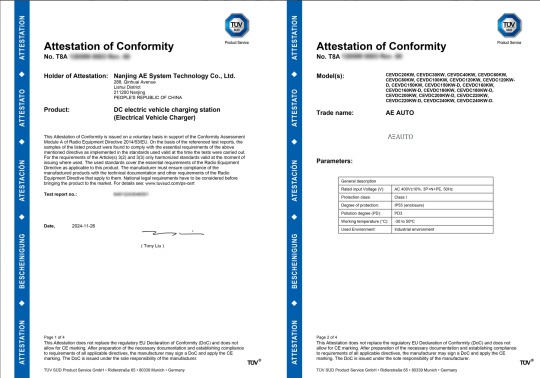
In the future, AEAUTO will continue to increase investment in scientific research, continuously improve its product innovation capabilities, and continue to provide customers with higher quality, safer, and more reliable products.
0 notes
Text
Want visa-free access for Indonesians to Europe and South Korea? Reinstate the 2015 visa-free rule.
This isn't really something I frequently write often since I constantly nerd out to weird and niche technology, but ever since obtaining my Indonesian polycarbonate passport, I can't help but wonder about visa-free agreements and things that can make travel easier for people.
When it comes to travelling, the topic of visa-free travel comes to mind to Indonesian travelers concerning the strength of their passport. According to the Henley Passport Index per December 2024, the Indonesian passport ranks the 66th strongest in the world, the strongest it has been since 2006. This strength grants Indonesians visa-free access to 76 different countries and territories around the world, including ASEAN member states, Timor Leste, Hong Kong and Japan. Although, this middle-power passport does pose as an inconvenience as Indonesian passport holders still need to apply for a visa to access the US, UK, Australia, Canada, and many European countries that fall under the Schengen Area.
As international travel recovers in a post-COVID era, and as more and more countries enact electronic travel authority for passport holders of visa waived countries, including fellow ASEAN member Thailand, Indonesians are wondering what's next that could strengthen the position of its passport. Especially concerning South Korea and Europe.
The rise of South Korea's soft power through the Korean wave has attracted many Indonesian travelers to travel the country for themselves, and with Europe's longstanding popular destinations such as the Netherlands and Germany with Indonesian travelers have left people wondering when will they be granted access free of visa?
On May 2024, the Indonesian embassy in Seoul spoke to the press on the possibility of granting Indonesians visa-free access to the East Asian country but citing difficulties such as the issue of reciprocity. And I think this is the time the Indonesian government should renew its 2015 visa-free rule for foreign nationals to enter Indonesia free of visa, even visa-on-arrival schemes.
THE 2015 VISA-FREE RULE SCHEME
Back in March 2015, the Indonesian government, through a collaborative effort from the Tourism Ministry and the Law and Human Rights Ministry, granted visa-free access to Indonesia initially for Japanese, Chinese, South Korean and Russian passport holders, before expanding to 30 countries including Canada, the US, the UK and many European countries.
However, there was one main problem. The reciprocal principle that was set forth in the Indonesian immigration law. What does that mean, you might ask? To put it simply, if Indonesia wants visa-free access to the United States for Indonesian passport holders, then Indonesia also must give the US the right for its citizens and passport holders visa-free access to Indonesia. You give me the same thing you want.
The Indonesian government then moved to revise the immigration law to abolish this clause of visa-free reciprocal arrangements. Since then, the visa-free system Indonesia grants to foreign nationals have increased to 174 countries as an incentive to boost the country's tourism industry.
This system was met positively by many countries, and it even kickstarted the Indonesian government's first attempts to woo the European Union in granting Indonesians visa-free access to the Schengen Area, referring to a group of European countries who voluntarily given up its internal border checks in 1985 as a milestone of European integration. It gained the attention and support of French, Dutch and Belgian governments.
Although, this system has ever since then been halted due to the COVID-19 pandemic and has never been fully resumed. As of 2024, the Indonesian government has only granted visa-free access to Indonesia for citizens from fellow ASEAN member states, Timor Leste, Colombia, Suriname and Hong Kong.
Without the 2015 visa-free system, the Indonesian government has little to offer in the negotiating tables to European and South Korean officials in proposing visa-free access for Indonesians to their territories. And ever since then, negotiations have remained in limbo, especially as environmental issues such as the sustainability of Indonesian palm oil and nickel have gained greater optics between Jakarta and Brussels.
With Indonesia's rising power in the world, now is the perfect time for the Indonesian Ministry of Foreign Affairs, in collaboration with the Law Ministry's Immigration General Directorate to reinstate the 2015 visa-free system for foreign nationals to renew negotiations back if it wants Indonesians visa free access to Europe and South Korea.
Reinstating the 2015 visa-free system could give Indonesian diplomats a sign of commitment to EU and South Korean officials that they are ready to commit themselves to the visa-free arrangement and negotiations that has since then been in a limbo.
From there, the Indonesian government could even convince to bring other nations into the negotiating tables to expand Indonesians' visa-free access list, including with next-door neighbor Australia. Australians make up the second-largest travelers inbound into Indonesia yearly, yet on the other hand many educated Indonesian and Australian elites, as well as bureaucrats called for an increase in people-to-people interaction between both countries as the current arrangement is still considered inadequate.
Resuming visa-free access for Australians under the 2015 system could also bring Canberra into the negotiating tables with Jakarta in granting Indonesians access to subclass 601 - the Australian ETA system for countries where their visa requirements are waived, reducing the need for an Australian visa that would cost Indonesians AU$190 (Rp 1.9 million) - something neighboring Malaysia and Singapore have enjoyed for years. Not to mention, such a move would also bring a new level of positive relationship between Indonesia and Australia, as both countries has signed a free trade agreement back in 2020, a new defense pact few months earlier, and as the Prabowo administration allowed the return of the remaining Bali Nine prisoners to Australia, gaining Prime Minister Anthony Albanese's gratitude.
For years, Indonesians are hopeful that more countries can fall onto the list of visa-free travel to strengthen the standing of their passports. But that process starts with how much Indonesia's policymakers, bureaucrats and diplomats are willing to commit on the negotiating table.
0 notes
Text
Japan e visa official website

If you are planning to travel to Japan and need to apply for a visa, the Japan e-Visa website is the official website where you can apply for an electronic visa to enter the country.
The Japan e-Visa website provides a user-friendly and convenient platform for eligible travelers to apply for a visa online. To apply for an e-Visa, you will need to access the Japan e-Visa website and create an account by providing your personal information, including your name, date of birth, and passport details. You will also need to provide details about your travel itinerary, such as your arrival and departure dates and the purpose of your visit to Japan.
Once you have created an account and completed the application form, you will be required to upload certain supporting documents, such as a passport scan and a recent photograph. The Japan e-Visa website provides clear instructions on how to upload these documents, and you should ensure that all documents are of high quality and meet the specified requirements.
After submitting your application and supporting documents, you will receive a confirmation email acknowledging receipt of your application. The application will then be reviewed by the Japanese Immigration Bureau, and you will be notified of the outcome of your application via email. If your application is approved, you will receive an e-Visa that you will need to print and present to immigration officials upon arrival in Japan.
The Japan e-Visa website also provides detailed information about the eligibility requirements for the e-Visa, the types of visas available, and the application fees. The website also offers a frequently asked questions (FAQ) section that provides answers to common questions about the application process and visa requirements.
It's important to note that not all travelers are eligible for an e-Visa, and some may need to apply for a traditional visa through the Japanese embassy or consulate in their home country. It's also important to ensure that all information provided in the application is accurate and truthful, as any false or misleading information can lead to visa denial or even legal consequences.
In conclusion, the Japan e-Visa website is the official platform for eligible travelers to apply for an electronic visa to enter Japan. The website provides a user-friendly and convenient platform for applicants to complete their application and upload the required documents. By using the official website, travelers can ensure that they are applying for a legitimate e-Visa and avoid potential scams or fraudulent websites.
Apply for eVisa Japan: CLICK HERE
#electronic japan visa#japan electronic visa application#how to get japan visa#can i get a visa to japan#can i apply japan visa online#can i get a visa to japan right now#how to pass japan visa#how to process japan visa#is japan visa free#japan electronic visa#japan electronic travel authorization#japan e-visa#japan e-visa application#electronic visa for japan#what is electronic visa#korean electronic visa
1 note
·
View note
Text
Japan electronic travel authorization

Japan has recently introduced an Electronic Travel Authorization (ETA) system for citizens of certain countries who wish to visit Japan for short-term stays. The ETA is an online authorization that allows eligible travelers to enter Japan for tourism or business purposes for up to 90 days.
The ETA system was introduced in April 2020 and is currently available for citizens of 29 countries, including the United States, Canada, Australia, and many European countries. The ETA is not a visa, but rather an electronic authorization that is linked to the traveler's passport.
The application process for the Japan ETA is simple and can be completed entirely online. Applicants must provide personal information, travel details, and other relevant information on the online application form. They must also upload a scan of their passport and pay the application fee.
Once the application is submitted, it is reviewed by Japanese immigration officials, who may request additional information or documentation if necessary. The processing time for the ETA is generally faster than the traditional visa application process, with most applications processed within a few business days.
If the application is approved, the ETA is sent to the applicant via email, which must be printed and presented to Japanese immigration officials upon arrival in Japan. It's important to note that even with an approved ETA, Japanese officials may still require additional information or documentation upon arrival.
The Japan ETA is valid for up to 2 years or until the expiration date of the passport, whichever comes first. However, it's important to note that the ETA does not guarantee entry into Japan, and travelers may be denied entry if they do not meet the entry requirements or if they provide false information on the application.
It's important to note that the Japan ETA is not available to all nationalities, and some travelers may still need to apply for a traditional visa through the Japanese embassy or consulate in their home country. Additionally, the ETA is only valid for certain purposes, such as tourism or business, and cannot be used for work or study purposes.
In conclusion, the Japan ETA system provides a convenient and efficient way for eligible travelers to obtain authorization to enter Japan for short-term stays. With a simple online application process and faster processing times, the ETA system is a great option for those looking to visit Japan for tourism or business purposes. It's important to check the eligibility requirements and specific application procedures before applying for a Japan ETA.
Apply for eVisa Japan: CLICK HERE
#electronic japan visa#japan electronic visa application#how to get japan visa#can i get a visa to japan#can i apply japan visa online#can i get a visa to japan right now#how to pass japan visa#how to process japan visa#is japan visa free#japan electronic visa#japan electronic travel authorization#japan e-visa#japan e-visa application#electronic visa for japan#what is electronic visa#korean electronic visa
1 note
·
View note
Text
Is Japan visa free

Japan offers visa exemptions to nationals of some countries, allowing them to enter and stay in Japan for a specified period without obtaining a visa. However, it is important to note that not all nationalities are eligible for visa-free travel to Japan.
Japan offers visa-free travel to citizens of 68 countries and regions, including the United States, Canada, Australia, New Zealand, and most European countries, among others. Citizens of these countries can visit Japan for tourism or business purposes for up to 90 days without a visa.
It is important to note that even if your country is on the list of countries with visa exemptions, there may be certain conditions that apply. For example, some countries may only be eligible for visa-free travel if they have a machine-readable passport or if they meet certain requirements related to the purpose of their visit.
For those who are not eligible for visa-free travel, a visa application is required to enter Japan. The visa application process can be complex and time-consuming, requiring detailed documentation and an application fee.
It's important to note that visa requirements can change at any time, and it is recommended to check the most up-to-date information before planning a trip to Japan. The Japanese embassy or consulate in your country is the best source of information regarding visa requirements and application procedures.
In conclusion, Japan offers visa-free travel to citizens of some countries, but not all nationalities are eligible. If you are not eligible for visa-free travel, you will need to obtain a visa to enter Japan. It's important to check the most up-to-date information and requirements before planning your trip to Japan.
Apply for eVisa Japan: CLICK HERE
#electronic japan visa#japan electronic visa application#how to get japan visa#can i get a visa to japan#can i apply japan visa online#can i get a visa to japan right now#how to pass japan visa#how to process japan visa#is japan visa free#japan electronic visa#japan electronic travel authorization#japan e-visa#japan e-visa application#electronic visa for japan#what is electronic visa#korean electronic visa
1 note
·
View note
Text
Can i get a visa to Japan

If you're planning a trip to Japan, one of the first questions you may have is whether or not you can get a visa to enter the country. The good news is that Japan offers various types of visas to foreign nationals, depending on the purpose of your visit. However, the eligibility requirements and application process can vary depending on your country of citizenship, so it's important to understand the visa requirements before planning your trip.
Here are some factors to consider when determining whether or not you can get a visa to Japan:
Your country of citizenship
The visa requirements for Japan vary depending on your country of citizenship. Some countries have visa exemption agreements with Japan, meaning that their citizens can enter Japan without a visa for a limited period of time. Other countries may require a visa for any length of stay.
The purpose of your visit
The type of visa you need to apply for depends on the purpose of your visit. Japan offers various types of visas, including tourist visas, business visas, student visas, and working holiday visas. Make sure you understand the specific requirements for the type of visa you need to apply for.
Your eligibility
To be eligible for a Japan visa, you must meet certain requirements, such as having a valid passport, sufficient funds for your stay, and a clear criminal record. You may also need to provide additional documents, such as proof of employment, proof of accommodation, or a letter of invitation.
The application process
The application process for a Japan visa can vary depending on your country of citizenship and the type of visa you're applying for. Some countries may require you to apply in person at a Japanese embassy or consulate, while others may allow you to apply online or by mail.
In conclusion, whether or not you can get a visa to Japan depends on various factors such as your country of citizenship, the purpose of your visit, and your eligibility. It's important to carefully review the visa requirements and application process before planning your trip to Japan to ensure that you have a smooth and stress-free experience.
Apply for eVisa Japan: CLICK HERE
#electronic japan visa#japan electronic visa application#how to get japan visa#can i get a visa to japan#can i apply japan visa online#can i get a visa to japan right now#how to pass japan visa#how to process japan visa#is japan visa free#japan electronic visa#japan electronic travel authorization#japan e-visa#japan e-visa application#electronic visa for japan#what is electronic visa#korean electronic visa
0 notes
Text
IS THE MOON RUSTING??
Blog#341
Wednesday, October 18th, 2023
Welcome back,
While our Moon is airless, research indicates the presence of hematite, a form of rust that normally requires oxygen and water. That has scientists puzzled.
Mars has long been known for its rust. Iron on its surface, combined with water and oxygen from the ancient past, give the Red Planet its hue. But scientists were recently surprised to find evidence that our airless Moon has rust on it as well.

A new paper in Science Advances reviews data from the Indian Space Research Organization's Chandrayaan-1 orbiter, which discovered water ice and mapped out a variety of minerals while surveying the Moon's surface in 2008. Lead author Shuai Li of the University of Hawaii has studied that water extensively in data from Chandrayaan-1's Moon Mineralogy Mapper instrument, or M3, which was built by NASA's Jet Propulsion Laboratory in Southern California. Water interacts with rock to produce a diversity of minerals, and M3 detected spectra - or light reflected off surfaces - that revealed the Moon's poles had a very different composition than the rest of it.

Intrigued, Li homed in on these polar spectra. While the Moon's surface is littered with iron-rich rocks, he nevertheless was surprised to find a close match with the spectral signature of hematite. The mineral is a form of iron oxide, or rust, produced when iron is exposed to oxygen and water. But the Moon isn't supposed to have oxygen or liquid water, so how can it be rusting?

The mystery starts with the solar wind, a stream of charged particles that flows out from the Sun, bombarding Earth and the Moon with hydrogen. Hydrogen makes it harder for hematite to form. It's what is known as a reducer, meaning it adds electrons to the materials it interacts with. That's the opposite of what is needed to make hematite: For iron to rust, it requires an oxidizer, which removes electrons. And while the Earth has a magnetic field shielding it from this hydrogen, the Moon does not.

"It's very puzzling," Li said. "The Moon is a terrible environment for hematite to form in." So he turned to JPL scientists Abigail Fraeman and Vivian Sun to help poke at M3's data and confirm his discovery of hematite.
"At first, I totally didn't believe it. It shouldn't exist based on the conditions present on the Moon," Fraeman said. "But since we discovered water on the Moon, people have been speculating that there could be a greater variety of minerals than we realize if that water had reacted with rocks."
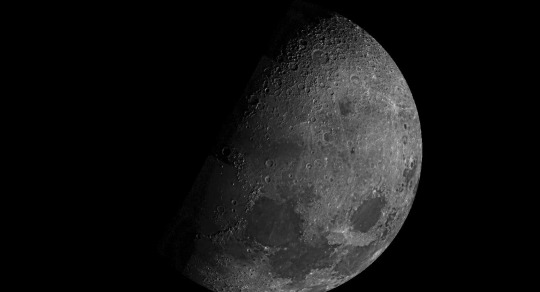
After taking a close look, Fraeman and Sun became convinced M3's data does indeed indicate the presence of hematite at the lunar poles. "In the end, the spectra were convincingly hematite-bearing, and there needed to be an explanation for why it's on the Moon," Sun said.
Their paper offers a three-pronged model to explain how rust might form in such an environment. For starters, while the Moon lacks an atmosphere, it is in fact home to trace amounts of oxygen.

The source of that oxygen: our planet. Earth's magnetic field trails behind the planet like a windsock. In 2007, Japan's Kaguya orbiter discovered that oxygen from Earth's upper atmosphere can hitch a ride on this trailing magnetotail, as it's officially known, traveling the 239,000 miles (385,00 kilometers) to the Moon.

That discovery fits with data from M3, which found more hematite on the Moon's Earth-facing near side than on its far side. "This suggested that Earth's oxygen could be driving the formation of hematite," Li said. The Moon has been inching away from Earth for billions of years, so it's also possible that more oxygen hopped across this rift when the two were closer in the ancient past.

Then there's the matter of all that hydrogen being delivered by the solar wind. As a reducer, hydrogen should prevent oxidation from occurring. But Earth's magnetotail has a mediating effect. Besides ferrying oxygen to the Moon from our home planet, it also blocks over 99% of the solar wind during certain periods of the Moon's orbit (specifically, whenever it's in the full Moon phase). That opens occasional windows during the lunar cycle when rust can form.
Originally published on nasa.com
COMING UP!!
(Saturday, October 21st, 2023)
"HOW CLOSE ARE WE TO SPACE COLONIZATION??"
#astronomy#outer space#alternate universe#astrophysics#universe#spacecraft#white universe#space#parallel universe#astrophotography#moon mars#rusty moon
138 notes
·
View notes